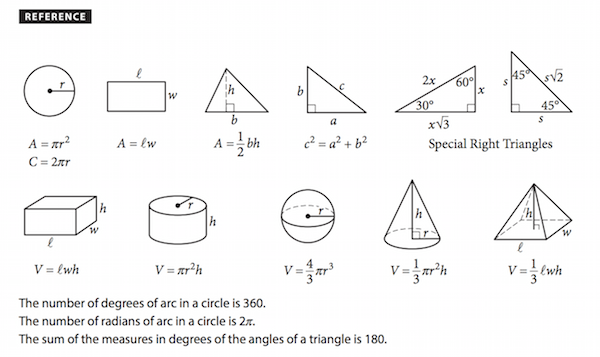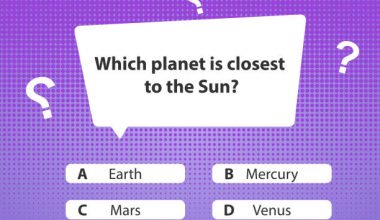If you’re preparing to take your ACT, there are ACT math formulas you must memorize. These formulas are likely to be seen on the day of the test. Therefore, getting familiar with these ACT math formulas is the right step in the right direction, and this article will help you identify these formulas.
Test-takers can confidently approach the ACT Math section by dedicating time to studying and mastering these equations and concepts. Remember, thorough preparation and a solid grasp of math formulas will significantly enhance your ability to solve problems efficiently and accurately.
The article will also discuss ACT Math Practice Formulas, and exploring the difference between ACT and SAT. Additionally, we will look at the ACT format, especially for the math section.
Meanwhile, below is our table of content.
Table of contents
What is the ACT?
ACT stands for “American College Testing.” It is a standardized test used for college admissions in the United States. The ACT assesses students’ English, mathematics, reading, and science knowledge and skills.
The test is scored on a scale of 1 to 36, with the composite score being the average in the four main sections. The ACT is among the most widely accepted college entrance exams, alongside the SAT (Scholastic Assessment Test).
Many colleges and universities use ACT scores as part of their admissions criteria to evaluate a student’s academic readiness and potential success in college.
Who Needs ACT?
The ACT is primarily taken by high school students planning to pursue higher education, typically in the United States. While not all colleges and universities require ACT scores for admission, many institutions use the ACT as one of several factors to evaluate an applicant’s readiness for college-level coursework.
Therefore, students considering applying to colleges or universities that require or recommend ACT scores must take the test. Additionally, some scholarship programs and financial aid opportunities may view ACT scores as part of their selection criteria.
Students must research the specific admission requirements of their desired colleges and universities to determine whether the ACT is necessary for their application.
See This: Hardest Degree In The Guinness Book Of World Records
Format Of The ACT Math Section
The ACT Math section consists of 60 multiple-choice questions, with five possible answer choices for each question. You are given 60 minutes to complete this section, which means you have an average of 1 minute per question. Managing your time effectively is essential to ensure enough time to answer all the questions.
Calculators are allowed for the entire math section of the ACT. However, it’s important to note that only specific types of calculators are permitted. The ACT organization provides a list of approved calculators on their website, so check the list and bring an approved calculator on test day.
According to your description, the difficulty level of the questions in the ACT Math section progresses from easiest to hardest. This means the earlier questions are less challenging, while the later ones become more complex. It’s an excellent strategy to start with the easier questions to build momentum and confidence before tackling the more challenging ones.
Lastly, it’s worth noting that the ACT does not provide a formula sheet. This means you must know essential math formulas and concepts for the test. Reviewing and practicing with the critical ACT math formulas beforehand can help you become familiar with the procedures and increase your chances of success on the test.
Remember to refer to official ACT resources and guides for the most accurate and up-to-date information regarding the test format, calculator policy, and formula or concept requirements. Good luck with your ACT preparation!
What is Included in the ACT Math Section?
There are three categories in the ACT Math section. The first is called Preparing for Higher Math, with 35 questions. It makes up about 60% of your math grade. The subsections under the heading “Preparing for Higher Math” are as follows:
- Number & Quantity: 7-10%
- Algebra: 12-15%
- Functions: 12-15%
- Geometry: 12-15%
- Statistics & Probability: 8-12%
Integrating Essential Skills, the second category, consists of 25 questions, accounting for about 40% of your math grade. The third type, Modeling, is included in the first two categories and requires you to create models or diagrams of specific issues.
You will earn eight reporting category scores for the math component, and your overall math score ranges from 1-36, as each subsection of the Preparing for the Higher Math segment of the exam has its score.
Wait until the late spring of your junior year to take the ACT because Geometry and Algebra II are prerequisites. You can choose an earlier test date if you are an advanced math student enrolled in these courses.
What is Included in the SAT Math Section?
The SAT measures students’ knowledge and aptitude in three significant areas, which are defined as follows:
- Heart of Algebra (19 questions): Linear equations, systems of linear equations, and functions. This section tests your ability to apply algebraic concepts and their relationships to real-world applications.
- Problem-Solving and Data Analysis (17 questions): Ratios, proportions, percentages, analysis of graphs, quantitative reasoning, and data interpretation skills. You will likely encounter charts, graphs, and tables in this section.
- Passport to Advanced Math (16 questions): This section focuses on more advanced math concepts, such as quadratic and higher-order equations, manipulating polynomials, and more complex equations or functions.
- Additional Topics (6 questions): Geometric concepts, fundamentals of trigonometry, and the arithmetic of complex numbers.
Like the ACT, the SAT involves high-level math concepts in algebra and geometry that many students study in the latter half of junior year.
Why Are the Ivy League Schools Called the “Ivy Leagues?” History
SAT vs. ACT: Which is Right for Me?
Although the SAT and ACT math portions are similar and use the same fundamental skills, they each measure different abilities. The ACT demands more rote memorization—and consequently, more formulae to memorize—while the SAT requires more excellent critical thinking and reasoning abilities.
If you’re unsure which to choose, we advise taking a practice test for each to determine where your strengths lie. And don’t panic if you don’t perform well on the exam the first time! According to studies, regular practice increases test performance by at least 100 points.
How To Study For The SAT/ACT Math Sections
If you’re a high school student planning to take the SAT or ACT, you may be wondering how to best prepare for the math portion of the test. The good news is that you’ve likely been preparing for years, as both these tests are designed to draw on the material you’ve covered in school. Practice, however, makes perfect.
To prepare for the SAT and ACT, take practice tests. These tests are the best way to familiarize yourself with the questions you’ll be asked on the exam. As you practice, score yourself to find your weaknesses. Use these weaknesses as a guide to direct your studying.
Additionally, memorize the essential formulas below. Knowing these important ACT and SAT formulas can help you save time on questions. Some memorization tips include making flashcards, drawing visual aids such as diagrams and charts, and using mnemonics.
Finally, many online resources and tutoring services are available for SAT/ACT math prep. Khan Academy, for instance, offers free SAT prep courses. Just 20 hours of Khan Academy practice can lead to an increase of over 100 points on your SAT.
Most Important ACT/SAT Math Formulas
Algebra & Coordinate Geometry Formulas to Know
1) Arithmetic mean (average) = (sum of all numbers) / (number of numbers)
For example, if you have the number set {2, 4, 6, 8, 10}, you can find the arithmetic mean as follows: {2 + 4 + 6 + 8 + 10}/5 = 30/5 = 6
2) Quadratic equation: x = −b ± √b²-4ac/2a
Used to solve quadratic equations of ax^2 + bx + c = 0. Plug in the values of a, b, and c and solve for x.
3) Slope Formula: (y₂-y₁)/ (x₂– x₁)
The slope is the rise (vertical change) / run (horizontal change)
4) Distance Formula: d=√(x₁ – x₂)² + (y₁ – y₂)²
Calculates the distance between two points on a coordinate plane.
5) Slope-intercept form of a line: y= mx+b
Describes the equation of a line in terms of its slope (m) and y-intercept.
6) Midpoint formula: (x₁+x₂) / 2, (y₁+y₂) / 2
Calculates the midpoint of a line segment on a coordinate plane.
7) Point-slope form of a line: y – y1 = m(x – x1)
Equation of a straight line, where m is the slope and (x1, y1) is a point on the line.
8) FOIL (First, Outer, Inner, Last): (a + b)(c + d) = ac + ad + bc + bd
Check Out: 25 Best College Degrees that Guarantee a Job After Graduation
Plane Geometry Formulas to Know
Note that you’ll be given the following reference sheet for the SAT. While memorizing these important math formulas is helpful to save time, you will see them on test day if you’re taking the SAT.

9) Area of triangle: area = (1/2) (base) (height)
10) Pythagorean theorem: a²+b²=c²
11) Special types of triangles: 45-45-90 triangles and 30-60-90 triangles
12) Area of a circle: π * r²
13) Area of a sector in a circle: 𝜃/360o(𝜋r2)
14) Area of a rectangle: area = length x width
15) Area of a parallelogram: area = base x height
16) Area of a trapezoid: A = ½ (a + b) h
17) Circumference of a Circle: C = 2πr
18) Sum of interior angles of a polygon: ( n − 2 ) × 180, where n= number of sides
19) Surface area of a sphere: 4πr2
Sequence Formulas to Know:
20) Arithmetic Sequence: an=a1 + c(n – 1)
21) Geometric Sequence: an=a1( c)n – 1
Trigonometry Formulas to Know
Remember: SOHCAHTOA
22) Sine = opposite/hypotenuse
23) Cosine = adjacent/hypotenuse
24) Tangent = opposite/adjacent
Statistics & Probability Formulas to Know
25) Probability = Number of favorable outcomes / Total number of outcomes
26) Simple interest formula: Principal x Rate x Time
27) Compound interest formula: Final amount = Principal x (1 + Rate/n)^(n x Time)
28) Percentages: percent = part / whole x 100%
Percent change =. change / original
29) Permutations: nPr = n! / (n-r)!, where n is the total number of objects and r is the number of objects being selected
30) Combinations: nCr = n! / (r! * (n-r)!), where n is the total number of objects and r is the number of objects being selected.
What Majors is Harvard Known For: 2024 Harvard University College Degrees Data
Conclusion
Being acquainted with the important ACT math formulas phrase makes it possible to achieve a good score in the math section on ACT. So, since the test does not include a formulas sheet, the review and the practice in advance are mandatory.
Students may have a better experience in encountering the ACT math section if they invest time in learning and practicing these formulas and ways. Keep this in mind as you work on mastering your preparation and Math tools. You will find that with practice you will solve problems faster and more correctly as you gain in understanding.
So, the best thing you can do is to memorize these indications and deal with practice as much as you can until you are ready to demonstrate these skills on the test day.
FAQs | Must-Know ACT Math Practice Formulas
Rectangle: Area = Length x Width. …
Triangle: Area = ½ Base x Height. …
Circle: Area = πr² Circumference = 2πr (π ≈ 3.14) …
Cylinder: Volume = πr²h. …
Sphere: Volume = (43)πr³ …
Area of Parallelogram = base x height. …
Pythagorean Theorem: a² + b² = c² …
Slope Formula.
Write the Mathematical Formulas Down Repeatedly. If you’re a kinesthetic learner, a simple trick you can try is writing the formulas over and over.
Practice Using the Formulas. Knowing the formulas is pointless if you don’t know how to use them.
Sing or Recite the Formulas Aloud.
Examinees are encouraged to use a familiar calculator, but all problems may be solved without a calculator. Calculators may only be used on the mathematics test, including ACT WorkKeys Applied Math. Sharing calculators during the test is not permitted.
The material tested on the SAT and ACT is almost exactly the same, as are the formats. The ACT math material is slightly more challenging, but not by much.
References
- collegetransitions.com-Must-Know ACT Math Practice Formulas
- blog.prepscholar.com/critical act math formulas you must know
- collegeraptor.com/critical formulas you must know for the act/
- magoosh.com/math formulas on the act/





